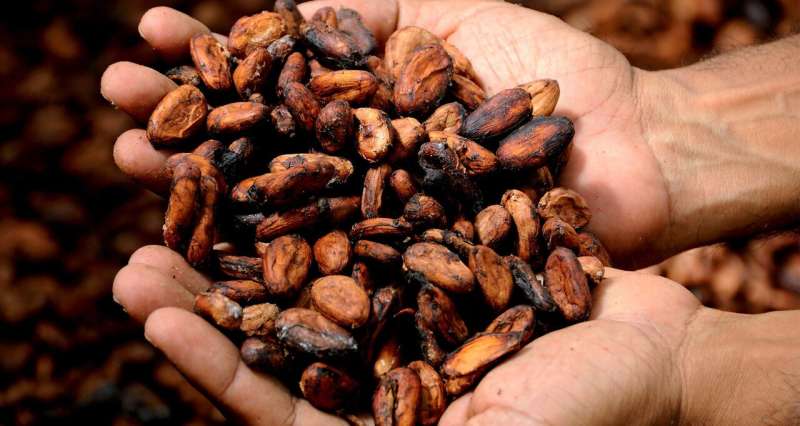Buying affordable ethical chocolate is almost impossible—but some firms are offering the next best thing

With supermarket aisles piled high with assortments of chocolate treats, the choice can seem overwhelming. The array of ethical options—some with certifications, others with marketing claims about sustainability—can just add to the confusion.
Shoppers are becoming , with consumer spending on ethical products increasing from £17 billion in 1999 to more than £141 billion in 2023, according to Ethical Consumer magazine. In terms of chocolate, that usually means avoiding issues such as cocoa's endemic reliance on , and .
Lack of transparency along the whole supply chain is a major barrier to sourcing ethical cocoa and buying ethical chocolate. This makes it almost impossible to guarantee that any chocolate you buy is ethically sourced, even from companies that do their utmost to avoid buying from suppliers with harmful practices.
However, some new brands, such as the Netherlands' Tony's Chocolonely and Scotland's UP-UP Chocolate, are trying to demonstrate their commitment to child labor-free products by doing more than claiming responsible sourcing of cocoa.
Tony's of labor abuses it finds every year, and its packaging explains the issues of modern slavery in cocoa farming. UP-UP in its supply chains and states which single-estate plantation its cocoa comes from on its packaging.
Why it's so hard to guarantee ethical practices
Without transparency, the origin of the cocoa—and therefore its impact on people and planet—cannot be known. Most of the world's cocoa is grown , where more than 2 million farmers work on .
Many of these and served only by motorcycle due to poor infrastructure. This contributes to the nature of cocoa supply chains.
Tracing actual shipments of cocoa is rare because it's sold as a commodity on a mass balance basis. So, while the volume of ethical cocoa farmed is equal to that sold, most cocoa is mixed with cocoa of unknown origin from multiple sources.
At various stages within the supply chain, from transport to processing, a company's ability to track cocoa from known sources at specific farms is compromised.
While such complexity makes addressing child labor more difficult, it could be seen as convenient for large chocolate producers. Some have had because of the lack of traceability between child labor on cocoa farms and their products.
Tony's and UP-UP try to overcome transparency issues by buying from specific plantations or cooperatives. UP-UP sources its cocoa from a specific plantation in Colombia. Tony's sources from a known cooperative in west Africa which makes monitoring labor conditions easier.
But this approach is not flawless. Tony's doesn't own the plantations it buys from, so while it can influence conditions, it cannot dictate to farmers. Tony's removed 1,752 children from child labor in its last year of reporting, but identified another 1,072 cases on plantations from which it sources its cocoa.
Tony's also works with cocoa processor Barry Callebaut, despite its to . it has "a responsibility and a plan of action—built on full traceability and transparency—to stop any form of child labor by 2025 and make it something of the past". Tony's wants to act from within the industry and scale up efforts to improve transparency in chocolate supply chains.
Hollow chocolate claims
The difficulties of building more transparent cocoa supply chains is only half the story. Big firms have routinely been criticized by charities such as Oxfam for claims made about efforts to protect workers.
Environmental charity Mighty Earth has called Cargill, a major cocoa processor and chocolate producer, for and . it does not tolerate the use of any form of forced labor and is "actively working towards eradicating child labor in the cocoa supply chain".
Child and forced labor have long been a problem within cocoa supply chains and . In 2001, eight of the industry's major multinationals child labor in cocoa production by 2005. Signatories have repeatedly pushed that deadline back.
Many companies rely on third-party certification by organizations such as and . But that a lack of consistency between standards means that claims can be misleading.
The most recent report from , a consortium of ethically minded and sustainability-focused organizations including Oxfam and WWF, claims that certification does not imply sustainability, because it doesn't require much actual operational change.
While cocoa certification , it doesn't necessarily increase the money for their crop. Large chocolate producers over meaningful structural change and this can result in a benefit from poor cocoa farmer pay and in their own self-certified reporting.
Consumers pay a premium for ethical chocolate. Both the separation of harvests that enables Tony's Chocolonely to know the origin of its cocoa origin and the meticulous survey approach taken by UP-UP Chocolate incur additional costs. Buying at huge scale and without such rigor does not.
Evidence of single origin cocoa published on product packaging does not guarantee ethical sourcing, but it's a sign of good practice. Sourcing single-origin cocoa enables checks of working conditions at known sites. It's better for the environment and leads to .
Without genuine transparency about the source of cocoa, ethical chocolate claims are hard to take seriously. Smaller producers such as UP-UP, Divine and vegan chocolatier Pacari, source their cocoa from individual plantations and have that transparency. And by identifying child labor abuses, Tony's is as much an activist brand highlighting cocoa's ills as it is a chocolatier.
Provided by The Conversation
This article is republished from under a Creative Commons license. Read the .![]()



















